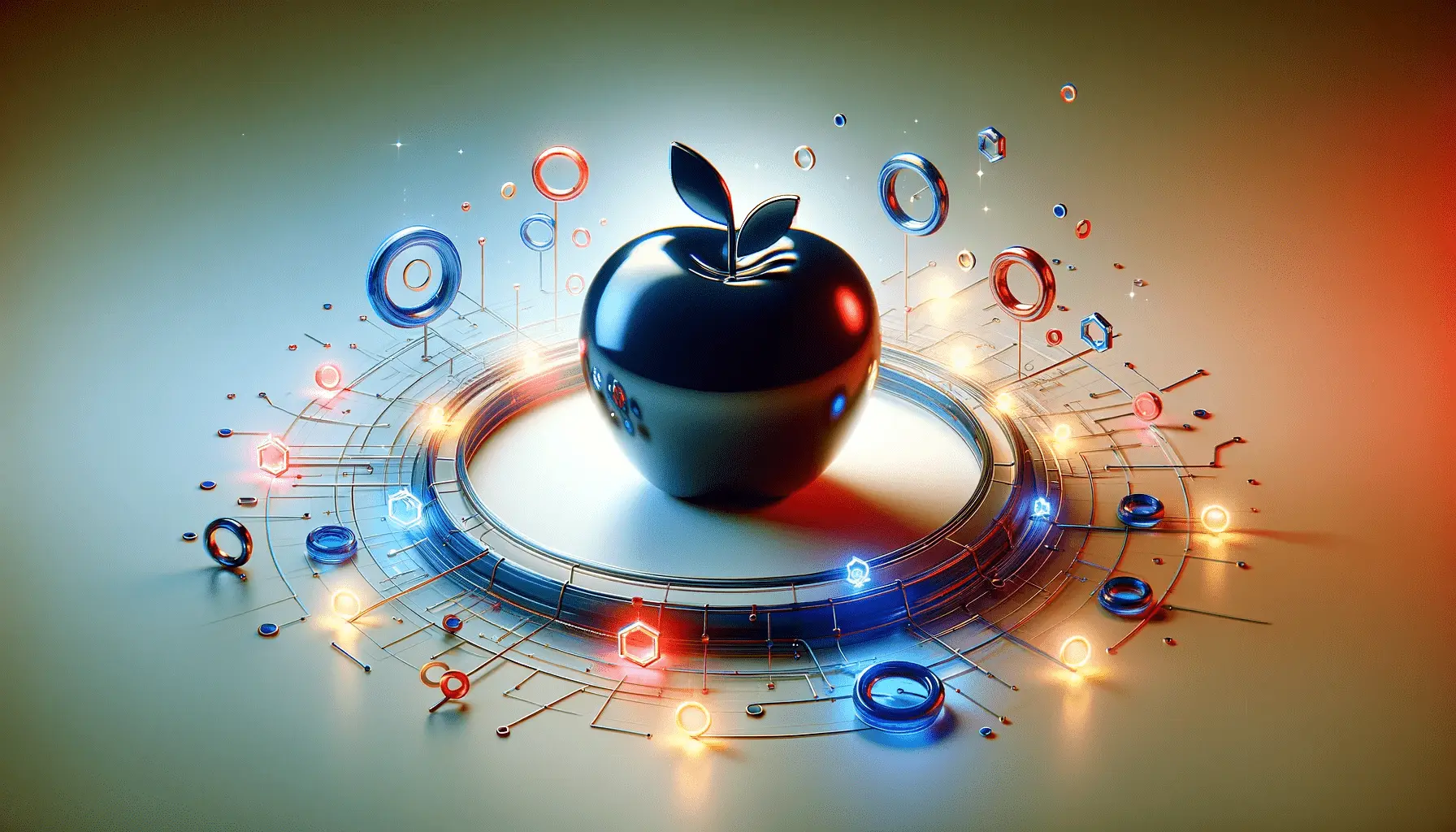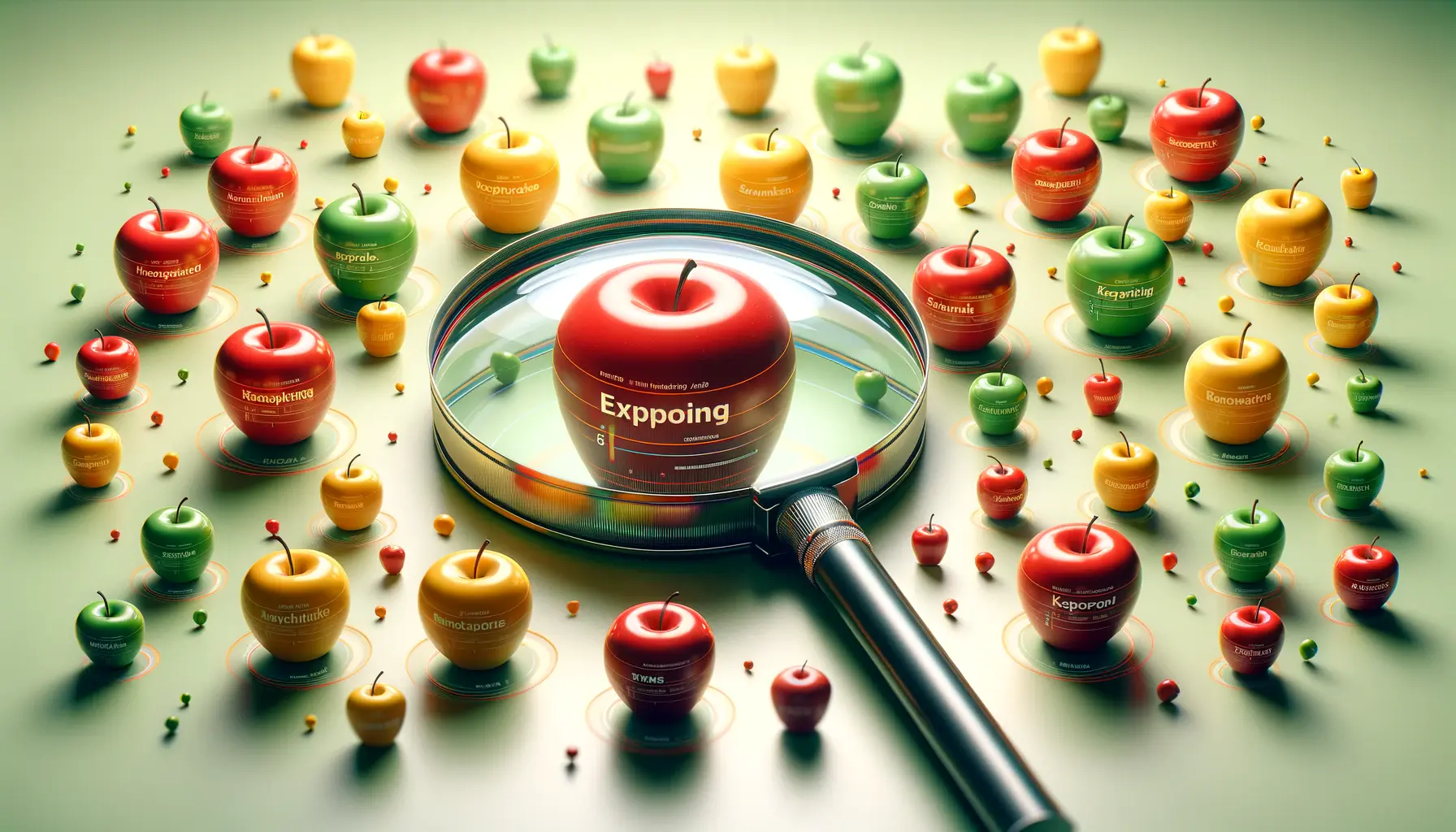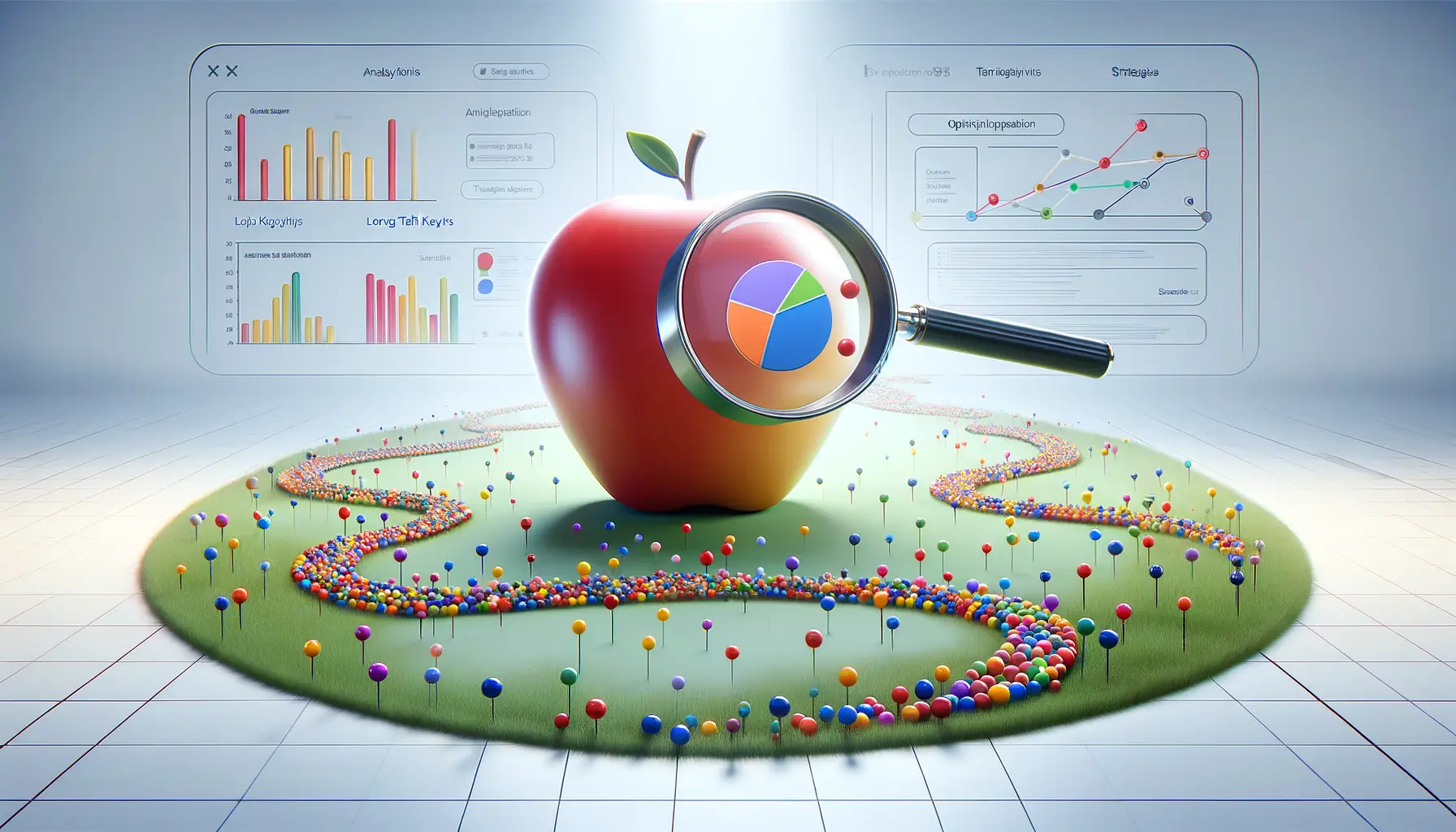Exploring the dynamic world of digital advertising, particularly within the realm of Apple Search Ads, reveals a rapidly evolving landscape where automation solutions are becoming increasingly crucial.
The integration of automation in Apple Search Ads not only streamlines the advertising process but also enhances the effectiveness and efficiency of campaigns.
This article delves into the multifaceted role of automation solutions in optimizing Apple Search Ads, offering insights into how businesses can leverage these tools to achieve better results.
In the realm of Apple Search Ads, automation stands as a transformative force, reshaping how campaigns are managed and optimized.
By harnessing the power of automation, advertisers can navigate the complexities of digital marketing with greater ease and precision.
This exploration into automation solutions aims to provide a comprehensive understanding of their impact on Apple Search Ads, highlighting the benefits and strategies for successful implementation.
- The Evolution of Apple Search Ads and the Rise of Automation
- Strategies for Implementing Automation in Apple Search Ads
- Advanced Techniques in Automation for Apple Search Ads
- Challenges and Solutions in Automating Apple Search Ads
- Measuring the Success of Automated Apple Search Ads
- Future Trends in Automation for Apple Search Ads
- Best Practices for Leveraging Automation in Apple Search Ads
- Embracing the Future of Apple Search Ads with Automation
- FAQs on Automation Solutions in Apple Search Ads
The Evolution of Apple Search Ads and the Rise of Automation
The inception of Apple Search Ads marked a significant milestone in app marketing, offering a platform for developers and marketers to promote their apps directly within the App Store.
As the digital advertising landscape evolved, the need for more efficient and effective campaign management became evident.
This led to the rise of automation solutions, designed to optimize the performance of Apple Search Ads campaigns.
Automation in Apple Search Ads encompasses a range of tools and technologies that streamline campaign management.
These solutions automate key tasks such as keyword bidding, ad placement, and performance analysis, enabling advertisers to focus on strategic decision-making.
The adoption of automation has revolutionized the way Apple Search Ads are managed, leading to improved campaign performance and higher return on investment (ROI).
Key Benefits of Automation in Apple Search Ads
One of the primary advantages of automation in Apple Search Ads is the ability to manage campaigns more efficiently.
Automated tools can analyze vast amounts of data in real-time, adjusting bids and targeting strategies to maximize ad performance.
This level of efficiency is difficult to achieve through manual management, especially for advertisers managing multiple campaigns.
Another significant benefit is the reduction of human error.
Manual campaign management is prone to mistakes, such as incorrect keyword bidding or targeting the wrong audience.
Automation solutions minimize these errors by relying on data-driven algorithms to make informed decisions.
This leads to more consistent and reliable campaign performance.
Automation in Apple Search Ads not only saves time but also enhances the accuracy and effectiveness of campaigns, leading to better results and higher ROI.
- Efficient Campaign Management: Automation tools analyze data and adjust strategies in real-time.
- Reduction of Human Error: Automated solutions minimize mistakes in bidding and targeting.
- Improved Campaign Performance: Data-driven algorithms lead to more effective ad placements.
Strategies for Implementing Automation in Apple Search Ads
Implementing automation in Apple Search Ads requires a strategic approach to ensure that the technology aligns with the campaign goals and targets the right audience.
The first step in this process is to define clear objectives for the campaign.
Whether the goal is to increase app downloads, enhance brand visibility, or improve conversion rates, having a well-defined objective is crucial for guiding the automation strategy.
Once the objectives are set, the next step involves selecting the right automation tools.
There are various automation solutions available, each offering different features and capabilities.
It’s essential to choose tools that not only align with the campaign goals but also integrate seamlessly with the existing marketing infrastructure.
This ensures a smooth transition to automated management and maximizes the effectiveness of the campaign.
Customizing Automation to Fit Specific Campaign Needs
Every Apple Search Ads campaign is unique, with specific requirements and challenges.
Customization is key when implementing automation solutions.
This involves tailoring the automation settings, such as bid adjustments and keyword targeting, to fit the specific needs of the campaign.
By customizing the automation tools, advertisers can ensure that their campaigns are optimized for maximum performance.
Monitoring and adjusting the automation settings is also an important part of the strategy.
While automation tools are designed to operate independently, regular monitoring is necessary to ensure that they are performing as expected.
Adjustments may be needed based on campaign performance data or changes in the market dynamics.
Regular monitoring and customization of automation settings are essential for maintaining optimal performance of Apple Search Ads campaigns.
- Defining Clear Campaign Objectives: Essential for guiding the automation strategy.
- Selecting the Right Automation Tools: Choose tools that align with campaign goals and integrate with existing marketing infrastructure.
- Customizing Automation Settings: Tailor settings to fit the specific needs of the campaign.
- Monitoring and Adjusting Automation: Regularly review performance data to make necessary adjustments.
Advanced Techniques in Automation for Apple Search Ads
Advancing beyond basic automation, there are several sophisticated techniques that can significantly enhance the performance of Apple Search Ads.
These advanced methods involve a deeper level of customization and data analysis, allowing for more precise targeting and optimization.
Machine Learning and AI in Automation
Machine learning and artificial intelligence (AI) play a pivotal role in advanced automation strategies.
These technologies enable the analysis of large datasets to identify patterns and trends that human analysts might miss.
By leveraging machine learning algorithms, advertisers can optimize their bids and targeting strategies based on predictive analytics, leading to more efficient use of advertising budgets and improved campaign results.
Dynamic Keyword Optimization
Another advanced technique is dynamic keyword optimization.
This involves continuously monitoring keyword performance and automatically adjusting bids based on real-time data.
This strategy ensures that campaigns are always targeting the most effective keywords, adapting to changes in user search behavior and competitive dynamics.
Dynamic keyword optimization also includes the exploration of new keywords.
Automation tools can suggest new, potentially high-performing keywords based on search trends and competitor analysis.
This proactive approach to keyword management keeps campaigns fresh and relevant, capturing new audience segments as they emerge.
Exploring advanced automation techniques like machine learning and dynamic keyword optimization can significantly enhance the precision and effectiveness of Apple Search Ads campaigns.
- Machine Learning for Predictive Analytics: Utilizing AI to optimize bids and targeting.
- Dynamic Keyword Optimization: Continuously adjusting bids based on keyword performance.
- Exploration of New Keywords: Using automation to identify and target emerging keywords.
Challenges and Solutions in Automating Apple Search Ads
While automation offers numerous benefits for managing Apple Search Ads, it also presents certain challenges that advertisers need to navigate.
Understanding these challenges and implementing effective solutions is key to maximizing the potential of automation tools.
Overcoming Data Overload
One of the primary challenges in automation is managing the sheer volume of data.
Apple Search Ads campaigns generate vast amounts of performance data, and sifting through this information to make informed decisions can be overwhelming.
The solution lies in using automation tools that not only collect data but also provide actionable insights.
These tools should be capable of analyzing data patterns and presenting them in an easily digestible format, enabling advertisers to make quick and informed decisions.
Ensuring Campaign Relevance
Another challenge is maintaining the relevance of campaigns.
As market trends and consumer behaviors evolve, campaigns need to adapt to stay effective.
Automation tools must be flexible enough to adjust strategies in real-time, ensuring that ads remain relevant to the target audience.
This requires continuous monitoring and fine-tuning of automation settings, keeping the campaigns aligned with the latest market trends.
Advertisers should also be wary of over-reliance on automation.
While these tools are powerful, they are not a substitute for human insight and creativity.
A balanced approach, where automation is complemented by human oversight, is essential for the success of Apple Search Ads campaigns.
Balancing automation with human oversight is crucial for maintaining the relevance and effectiveness of Apple Search Ads campaigns.
- Managing Data Overload: Use tools that provide actionable insights from data.
- Adapting to Market Trends: Ensure automation tools are flexible for real-time adjustments.
- Human Oversight: Complement automation with human insight and creativity.
Measuring the Success of Automated Apple Search Ads
Assessing the effectiveness of automation in Apple Search Ads is crucial for understanding its impact on campaign performance.
Key performance indicators (KPIs) and analytics play a vital role in this evaluation process, providing insights into the success of automation strategies.
Key Performance Indicators (KPIs) to Track
Several KPIs are essential for measuring the success of automated Apple Search Ads.
These include click-through rate (CTR), conversion rate, cost per acquisition (CPA), and return on ad spend (ROAS).
Monitoring these metrics helps advertisers understand how well their automated campaigns are performing in terms of user engagement, conversions, and overall profitability.
It’s important to set benchmark KPIs before implementing automation and compare them regularly with post-automation performance.
This comparison provides a clear picture of the impact of automation on campaign effectiveness.
Utilizing Analytics for Deeper Insights
Beyond basic KPIs, advanced analytics can offer deeper insights into campaign performance.
Analytical tools can segment data based on demographics, user behavior, and other criteria, providing a more granular view of campaign effectiveness.
This level of analysis helps advertisers understand not just how well their campaigns are performing, but why they are performing in that way.
Analytics can also help identify areas for improvement.
For instance, if certain demographics are not responding well to ads, advertisers can use this information to adjust their targeting strategies.
Similarly, if certain keywords are underperforming, they can be replaced or optimized for better results.
Effective use of KPIs and analytics is essential for measuring and enhancing the success of automated Apple Search Ads campaigns.
- Essential KPIs: Track metrics like CTR, CPA, and ROAS to gauge campaign performance.
- Benchmarking: Compare pre- and post-automation performance to assess impact.
- Advanced Analytics: Use detailed data segmentation for deeper campaign insights.
Future Trends in Automation for Apple Search Ads
The landscape of Apple Search Ads is continually evolving, and with it, the role of automation is also expected to undergo significant changes.
Staying ahead of these trends is crucial for advertisers looking to maintain a competitive edge in the dynamic world of app marketing.
Integration of Advanced AI and Machine Learning
One of the most prominent future trends is the deeper integration of advanced AI and machine learning algorithms.
These technologies are set to become more sophisticated, offering even more precise targeting and optimization capabilities.
This evolution will likely lead to automation solutions that are not only more efficient but also more intuitive, capable of making complex decisions with minimal human intervention.
Personalization at Scale
Another key trend is the move towards personalization at scale.
Automation tools will increasingly be able to tailor ad campaigns to individual users, based on their behaviors and preferences.
This level of personalization will enhance user engagement and conversion rates, as ads become more relevant to each user’s specific interests and needs.
As privacy concerns continue to grow, automation tools will also need to adapt to ensure compliance with data protection regulations.
This will involve developing new strategies for targeting and personalization that respect user privacy while still delivering effective ad campaigns.
Embracing future trends like advanced AI integration and personalization will be key for advertisers to stay ahead in the evolving world of Apple Search Ads.
- Advanced AI and Machine Learning: Expect more sophisticated and intuitive automation solutions.
- Personalization at Scale: Tailoring campaigns to individual user behaviors and preferences.
- Privacy-Compliant Strategies: Developing new targeting approaches that respect user privacy.
Best Practices for Leveraging Automation in Apple Search Ads
To maximize the benefits of automation in Apple Search Ads, it’s essential to adhere to best practices.
These guidelines help ensure that automation tools are used effectively, leading to optimized campaign performance and better ROI.
Continuous Learning and Adaptation
Automation in digital advertising is not a set-and-forget solution.
It requires continuous learning and adaptation.
Advertisers should regularly review the performance data generated by their campaigns and adjust their automation strategies accordingly.
This iterative process helps in fine-tuning the campaigns to changing market conditions and user behaviors.
Integrating Automation with Overall Marketing Strategy
Automation should be viewed as a component of the broader marketing strategy, not in isolation.
It’s crucial to ensure that automated Apple Search Ads campaigns are aligned with the overall marketing objectives and brand messaging.
This integration ensures a consistent and cohesive marketing approach, enhancing the overall impact of the campaigns.
Moreover, collaboration between different teams – such as marketing, sales, and product development – is vital.
Sharing insights and data across these teams can lead to a more holistic understanding of the target audience and more effective campaign strategies.
Effective use of automation in Apple Search Ads requires continuous adaptation and integration with the broader marketing strategy for optimal results.
- Iterative Learning: Regularly review and adjust automation strategies based on performance data.
- Strategic Integration: Align automated campaigns with overall marketing objectives and brand messaging.
- Collaborative Approach: Share insights across different teams for a holistic marketing strategy.
Embracing the Future of Apple Search Ads with Automation
The journey through the realm of Apple Search Ads reveals a clear trajectory towards increased reliance on automation solutions.
As we have explored, these solutions offer a myriad of benefits, from enhanced efficiency and accuracy to advanced targeting capabilities.
The integration of automation in Apple Search Ads is not just a trend but a necessary evolution in the face of an increasingly complex digital advertising landscape.
Key Takeaways and Future Outlook
Looking ahead, the future of Apple Search Ads is intrinsically linked to the advancements in automation technologies.
The integration of AI and machine learning will continue to refine and revolutionize the way campaigns are managed, bringing about unprecedented levels of personalization and efficiency.
Advertisers who embrace these changes and continuously adapt their strategies will find themselves at the forefront of this exciting evolution.
However, the journey does not end here.
The continuous evolution of market trends and consumer behaviors necessitates an ongoing commitment to learning and adaptation.
Automation, while powerful, is not a standalone solution but a tool that works best when integrated into a comprehensive marketing strategy.
The balance between technology and human insight remains crucial, ensuring that campaigns are not only data-driven but also creatively inspired.
- Advancements in AI and Machine Learning: Expect more sophisticated automation in Apple Search Ads.
- Personalization and Efficiency: Tailoring campaigns to individual user behaviors and preferences.
- Continuous Learning and Adaptation: Regularly updating strategies in response to market changes.
- Integration with Overall Marketing Strategy: Ensuring automated campaigns align with broader marketing goals.
- Balance of Technology and Human Insight: Combining data-driven automation with creative marketing approaches.
In conclusion, the future of Apple Search Ads is bright with the promise of automation.
By embracing these technological advancements and integrating them into well-rounded marketing strategies, advertisers can unlock new levels of success.
The key lies in the continuous pursuit of knowledge, adaptation, and the harmonious blend of technology and human creativity.
If you're seeking expertise in Apple Search Ads campaigns, visit our service page for professional management!
FAQs on Automation Solutions in Apple Search Ads
Delve into the frequently asked questions about automation solutions in Apple Search Ads, offering insights and clarity for advertisers and marketers.
Automation enhances efficiency, reduces human error, and optimizes campaign performance through data-driven decision-making.
AI in automation enables predictive analytics and sophisticated targeting, leading to more effective and efficient campaigns.
Yes, automation tools can adjust strategies in real-time, ensuring campaigns remain relevant and effective.
Human oversight complements automation by adding creativity and strategic thinking, balancing data-driven decisions.
Continuous learning is vital for adapting strategies to evolving user behaviors and market conditions.
Advanced techniques include dynamic keyword optimization and leveraging machine learning for deeper insights.
Automation tools analyze and present data in an actionable format, simplifying decision-making processes.
Future trends include deeper AI integration, personalization at scale, and privacy-compliant targeting strategies.










